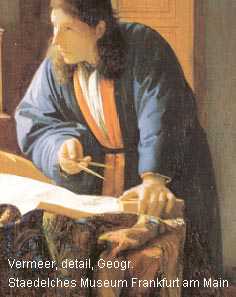

 The
Japanese style chamber gown was often worn by wealthy traders and
later on by scientists, authors and painters, sedentary people
working at home.
The
Japanese style chamber gown was often worn by wealthy traders and
later on by scientists, authors and painters, sedentary people
working at home.
The design is a kimono style T-shape, following the traditional Japanese kimono-outfit. The very first silk kimono's were a gift from the Japanese emperor to the Dutch envoy. The VOC United East India Company gave exquisite gifts to the Emperor in order to show its gratitude for the trade monopoly privilege.
The Dutch VOC envoy left the trading post on the island of Deshima once a year as he was allowed only one visit Edo (= Tokyo).
Padded kimonos sent back to the Republic were exotic and very warm and thus became a hit when introduced in The Dutch Republic. The wide arms were often narrowed to fit Dutch requirements for use.
A 'Japonsche rok" chamber coat is padded and is designed to be worn inside the house during cold weather. That was quite necessary in winter as heating was sparse (foreign visitors remarked on it in their travel journals). See house cap.
A luxury coat for a man is the tabbert.
See house coats on the two Vermeer paintings Astronomer and Geographer.
 Note:
This object was NOT part of the
Vermeer-inventory as listed by the clerk working for Delft notary
public J. van Veen. He made this list on February 29, 1676, in the
Thins/Vermeer home located on Oude Langendijk on the corner of
Molenpoort. The painter Johannes Vermeer had died there at the end of
December 1675. His widow Catherina and their eleven children still
lived there with her mother Maria Thins.
Note:
This object was NOT part of the
Vermeer-inventory as listed by the clerk working for Delft notary
public J. van Veen. He made this list on February 29, 1676, in the
Thins/Vermeer home located on Oude Langendijk on the corner of
Molenpoort. The painter Johannes Vermeer had died there at the end of
December 1675. His widow Catherina and their eleven children still
lived there with her mother Maria Thins.
The transcription of the 1676 inventory, now in the Delft archives, is based upon its first full publication by A.J.J.M. van Peer, "Drie collecties...", Oud Holland, 1957, pp. 98-103. My additions and explanations are added in square brackets [__]. Dutch terms have been checked against the world's largest language dictionary, the Dictionary of the Dutch Language (Woordenboek der Nederlandsche Taal , or WNT), which was begun by De Vries en Te Winkel in 1882.
See also Marieke de Winkel, 'The Interpretation of Dress in Vermeer's Paintings' in Vermeer Studies, edited by Ivan Gaskell and Michiel Jonker, National Gallery of Art, Washington DC, 1998,327-339.
Leo Akvelt and Els M. Jacobs, De Kleurrijke wereld van de VOC, Nationaal Jubileumboek VOC 1602-2002, Toth publishers, Bussum, 2002, pp. 46-47.
Yellow image: Cornelis Saftleven, Boy in 'japanese' coat, 1657. Coll. C. Hofstede de Groot, now in Groninger museum, Groningen.
This page forms part of a large encyclopedic site on Vermeer and Delft. Research by Drs. Kees Kaldenbach (email). A full presentation is on view at johannesvermeer.info.
Launched December, 2002; Last update March 2, 2017.
Back to the Welcome page: click Welcome.